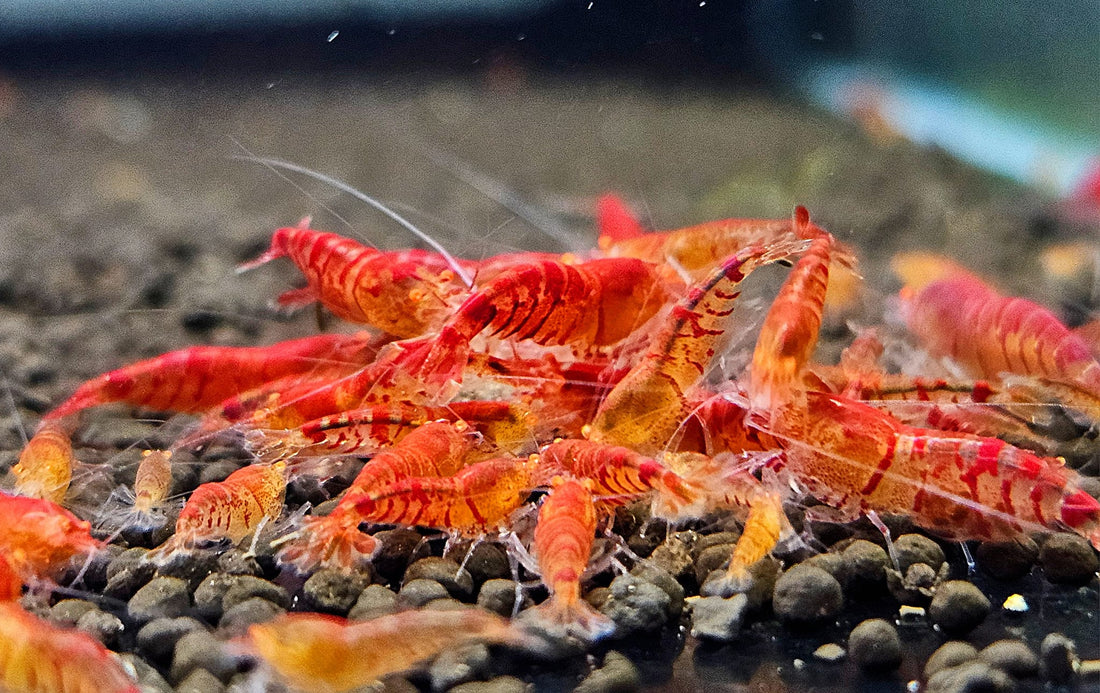Why Are My Shrimp Dying? 7 Common Mistakes and How to Fix Them 🧪🐠
Losing shrimp can be incredibly frustrating—especially when everything seems fine. Whether you’re new to the hobby or an experienced keeper, sudden or unexplained shrimp deaths usually point to a few common issues.
In this post, we’ll walk you through the 7 most common reasons shrimp die in aquariums—and how to fix them before they wipe out your colony.
1. Poor Water Parameters 💧
Shrimp are sensitive to water chemistry. Inconsistent or incorrect water parameters are the #1 cause of shrimp deaths.
- Common problems: High ammonia or nitrite, pH swings, incorrect GH/KH
-
Fix it:
- Test your water with liquid test kits weekly.
- Neocaridina: pH 6.8–7.6, GH 6–8, KH 2–4
- Caridina: pH 5.5–6.5, GH 4–6, KH 0–1
- Keep temperature stable (72–76°F is ideal for most species).
2. New Tank Syndrome (Uncycled Tanks) 🚫🦠
Shrimp need a fully cycled tank. Ammonia and nitrite spikes from an uncycled or immature tank can kill shrimp quickly—even overnight.
-
Fix it:
- Ensure your tank is fully cycled (0 ammonia, 0 nitrite, low nitrates).
- Use a sponge filter or mature bio media to support beneficial bacteria.
- Only add shrimp after the tank has matured for 4–6 weeks.
3. Copper or Toxins in the Water ⚠️🥼
Copper is extremely toxic to shrimp and can be found in tap water, medications, and some fish foods.
-
Fix it:
- Use a water conditioner that neutralizes heavy metals.
- Check all medications for copper before use.
- Feed shrimp-specific food with no harmful additives.
4. Improper Acclimation ⏳🪣
Shrimp are highly sensitive to changes in water parameters, especially during transport and tank introduction.
-
Fix it:
- Drip acclimate new shrimp for at least 1–2 hours.
- Match temperature, pH, and TDS before adding them to the tank.
- Turn off lights during acclimation to reduce stress.
5. Overfeeding (and Uneaten Food) 🍽️
Excess food can rot, cause ammonia spikes, and invite bacteria—all dangerous to shrimp in low-flow environments.
-
Fix it:
- Feed very small portions—only what they can eat in 1–2 hours.
- Remove uneaten food promptly.
- Feed every other day in established tanks with biofilm and algae.
6. Inconsistent Water Changes or Sudden Swings 🌊🔁
Large or irregular water changes can shock shrimp, especially if the parameters differ from tank conditions.
-
Fix it:
- Change 10–20% of water weekly (use remineralized RO water if needed).
- Match temperature and TDS before water changes.
- Drip in new water slowly for sensitive shrimp like CRS or PRL.
7. Lack of Hiding Places for Molting Shrimp 🛏️🦐
Molting shrimp are vulnerable and need shelter to feel safe. Without cover, they may be stressed or attacked.
-
Fix it:
- Add moss, leaf litter (like Indian almond leaves), or shrimp caves/tubes.
- Avoid aggressive tankmates that may harass molting shrimp.
- Maintain proper GH levels to support healthy molting.
Bonus Tip: Quarantine Everything 🌱🧼
New plants, rocks, or hardscape can introduce parasites or pesticides. Always rinse and quarantine before placing anything new in your shrimp tank.
Final Thoughts 💭
Shrimp are delicate creatures—but with the right care, they can thrive and breed successfully in a well-maintained tank. The key is stability: consistent water parameters, responsible feeding, and a safe, stress-free environment.
If you're still unsure why your shrimp are dying, reach out to us at Shrimply Fintastic. We're happy to help you troubleshoot!


1 comment
Please send me any info you have. I have a tank fully cycled with no inhabitants and I want to fully prepare it for your new shrimp. So cool. I’m new to these beautiful creatures. Also what inhabitants are safe with them. My sister raises guppies? Good?